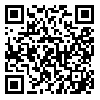Volume 10, Issue 3 (Autumn 2024)
J Health Res Commun 2024, 10(3): 19-29 |
Back to browse issues page
Download citation:
BibTeX | RIS | EndNote | Medlars | ProCite | Reference Manager | RefWorks
Send citation to:



BibTeX | RIS | EndNote | Medlars | ProCite | Reference Manager | RefWorks
Send citation to:
Ghasemi H, Elahi H, Samaei S E. Assessment and Feasibility Study of Improving the Artificial Lighting System in a Repair Workshop. J Health Res Commun 2024; 10 (3) :19-29
URL: http://jhc.mazums.ac.ir/article-1-1035-en.html
URL: http://jhc.mazums.ac.ir/article-1-1035-en.html
Master's student in Occupational Health Engineering, Faculty of Health, Mazandaran University of Medical Sciences, Sari, Iran.
Abstract: (2063 Views)
Introduction and purpose: Given that optimal workplace lighting plays a crucial role in mitigating visual strain, enhancing productivity, and improving overall employee performance, the present study sought to evaluate the current lighting system within a repair workshop. Additionally, it aimed to explore the feasibility of proposing tailored strategies for achieving optimal lighting conditions through specialized tools, such as DIALux software.
Methods: In this cross-sectional study, the work environment was examined, and lighting measurements were carried out at 35 stations. According to national standards, various executable solutions considering the existing lighting system and fixtures were evaluated to achieve an illumination intensity of 300 lux and a uniformity index of 0.6 in the workhouse. Moreover, the software's capabilities were used to predict the impact of each solution on improving illumination intensity and uniformity index.
Results: The average illumination intensity in the repair workhouse was 290 lux with a uniformity index of 0.3. According to these results, the workhouse's lighting system needed improvement. The results indicated that software-provided solutions could increase illumination intensity to between 300 and 804 lux and improve the uniformity index to between 0.32 and 0.58.
Conclusion: The results revealed that significant changes and improvements in the workhouse's lighting can be achieved by implementing simple and low-cost solutions. In addition, the use of specialized lighting software by experts can lead to reliable and feasible solutions for enhancing lighting systems.
Methods: In this cross-sectional study, the work environment was examined, and lighting measurements were carried out at 35 stations. According to national standards, various executable solutions considering the existing lighting system and fixtures were evaluated to achieve an illumination intensity of 300 lux and a uniformity index of 0.6 in the workhouse. Moreover, the software's capabilities were used to predict the impact of each solution on improving illumination intensity and uniformity index.
Results: The average illumination intensity in the repair workhouse was 290 lux with a uniformity index of 0.3. According to these results, the workhouse's lighting system needed improvement. The results indicated that software-provided solutions could increase illumination intensity to between 300 and 804 lux and improve the uniformity index to between 0.32 and 0.58.
Conclusion: The results revealed that significant changes and improvements in the workhouse's lighting can be achieved by implementing simple and low-cost solutions. In addition, the use of specialized lighting software by experts can lead to reliable and feasible solutions for enhancing lighting systems.
Type of Study: Research(Original) |
Subject:
Occupational Health
Send email to the article author
| Rights and permissions | |
 |
This work is licensed under a Creative Commons Attribution-NonCommercial 4.0 International License. |







